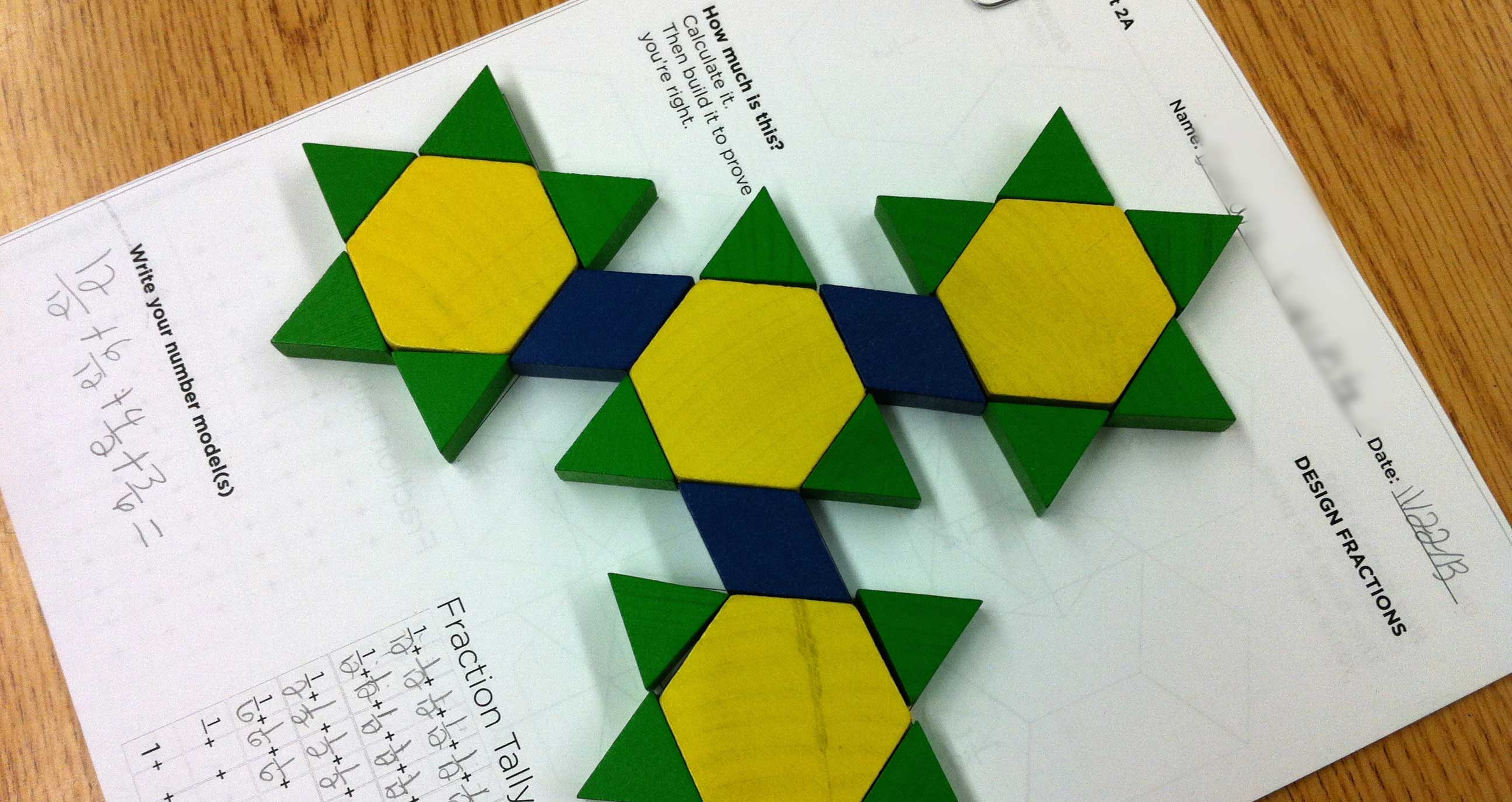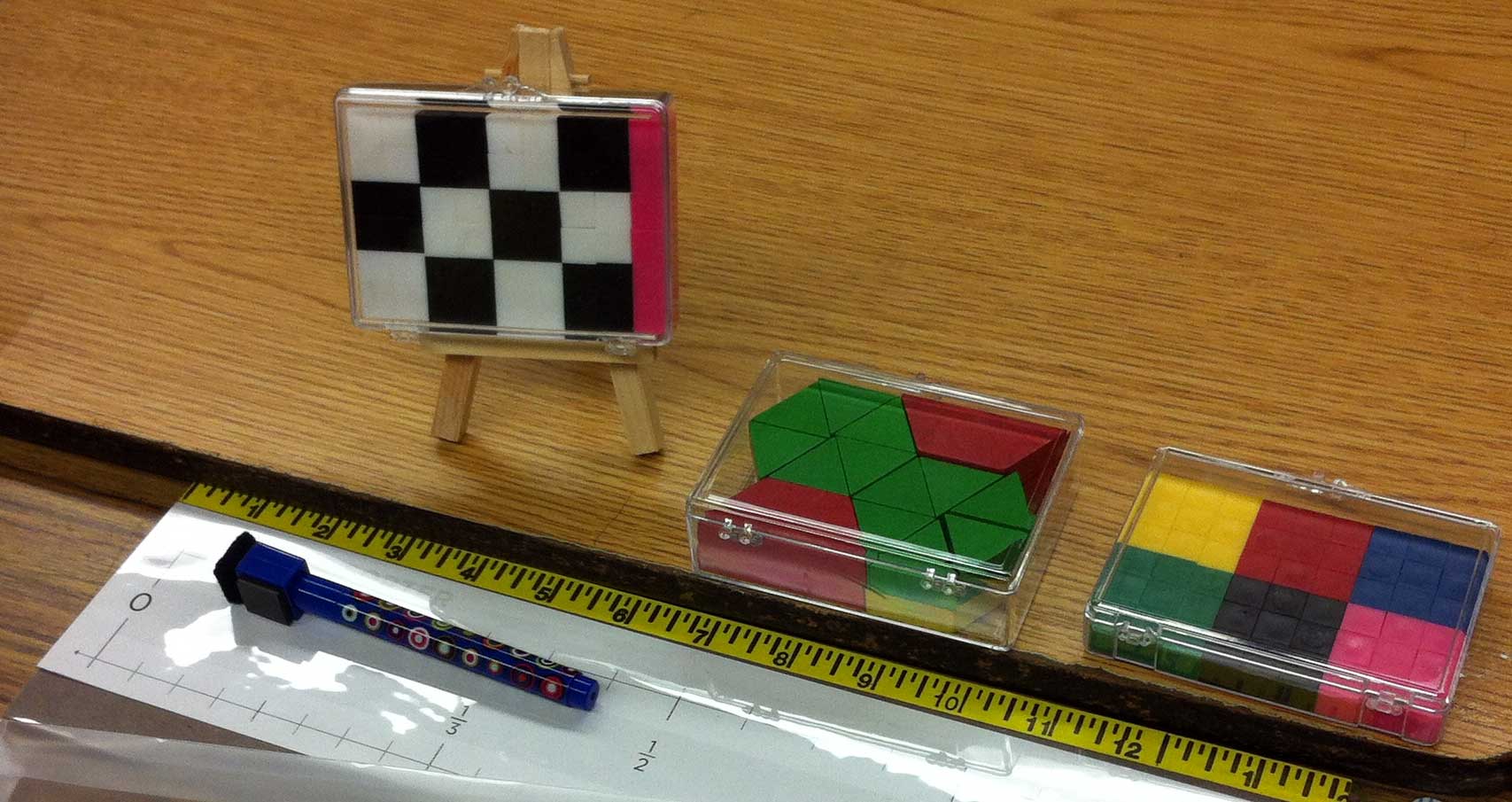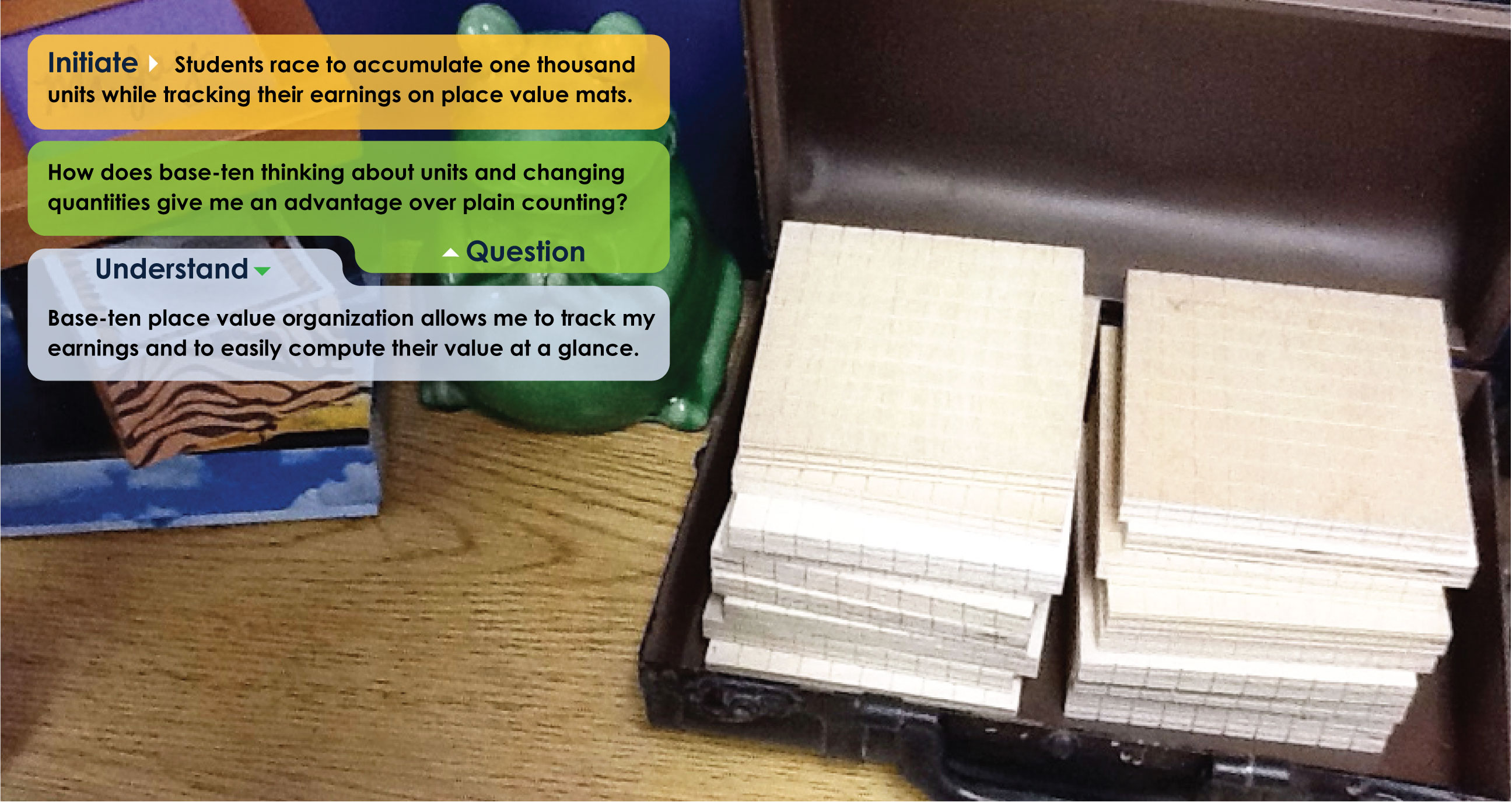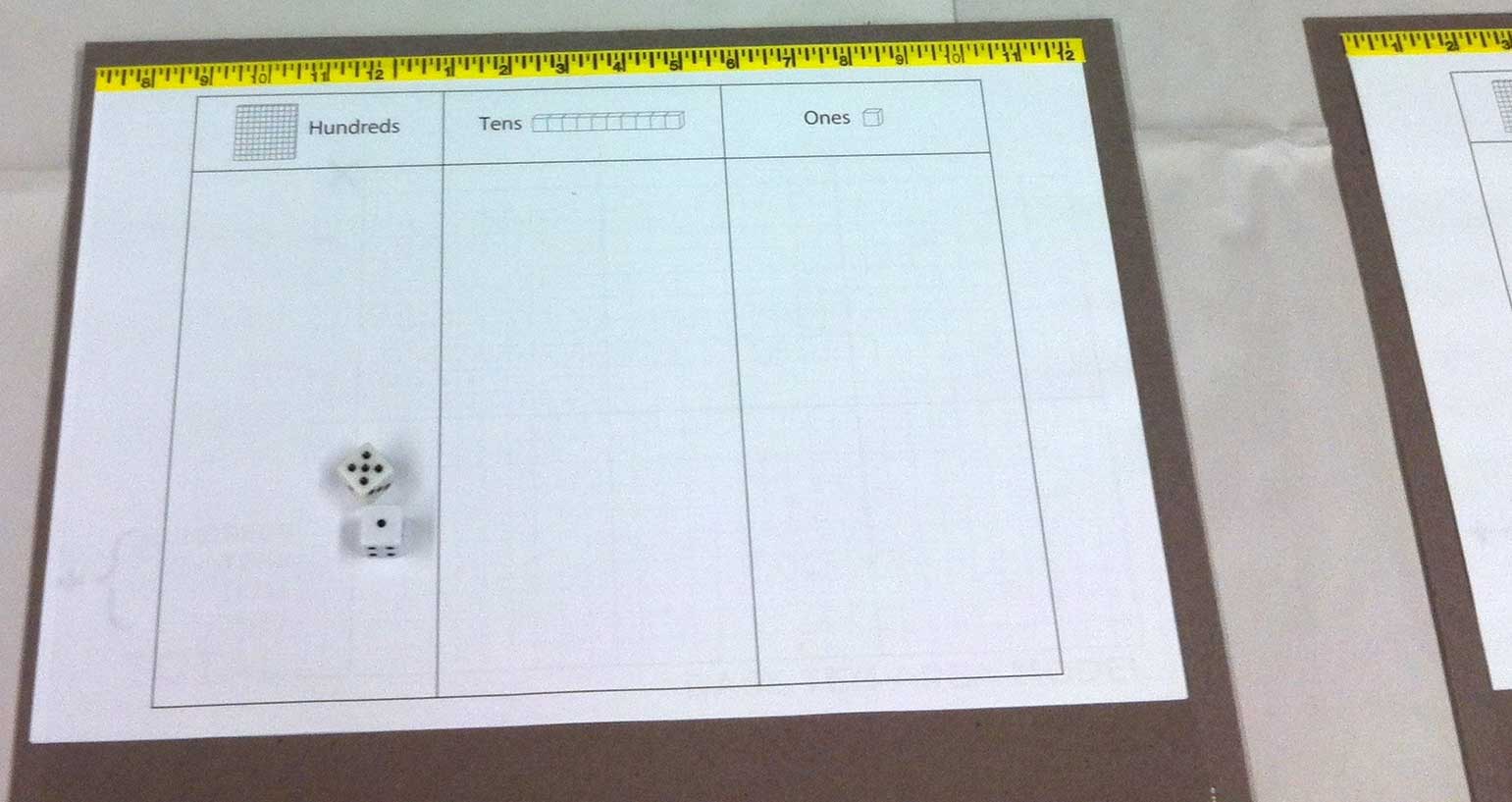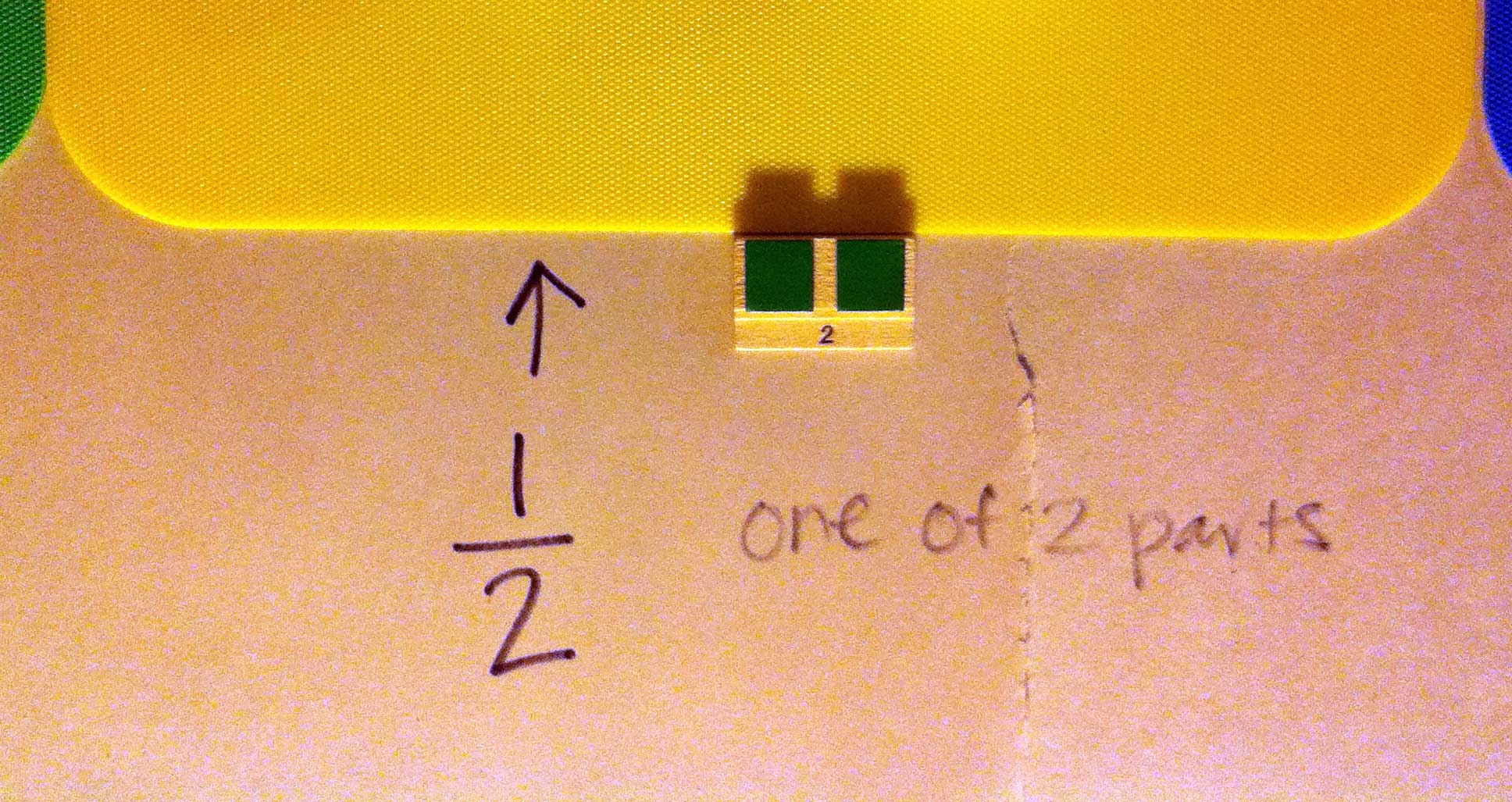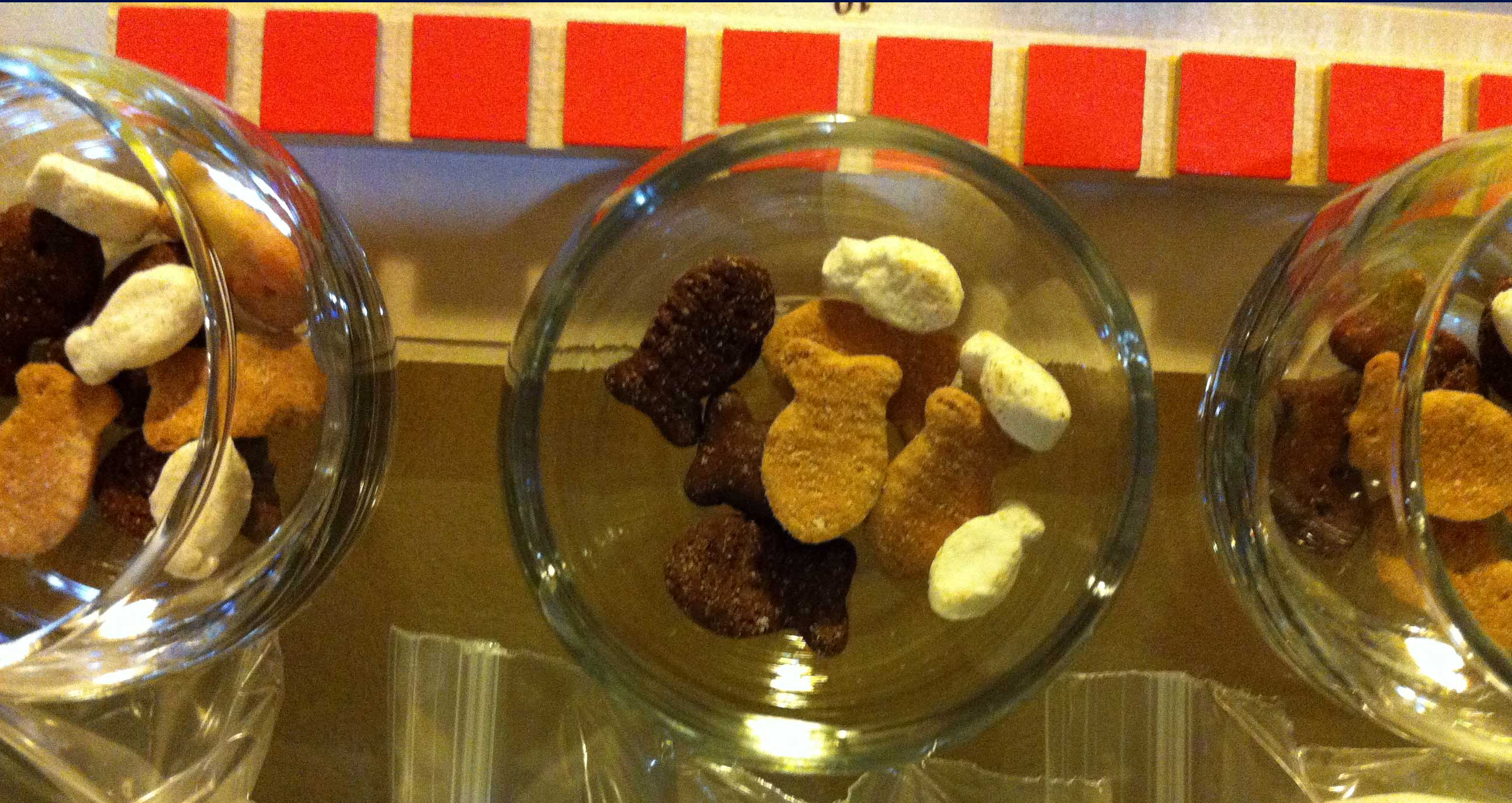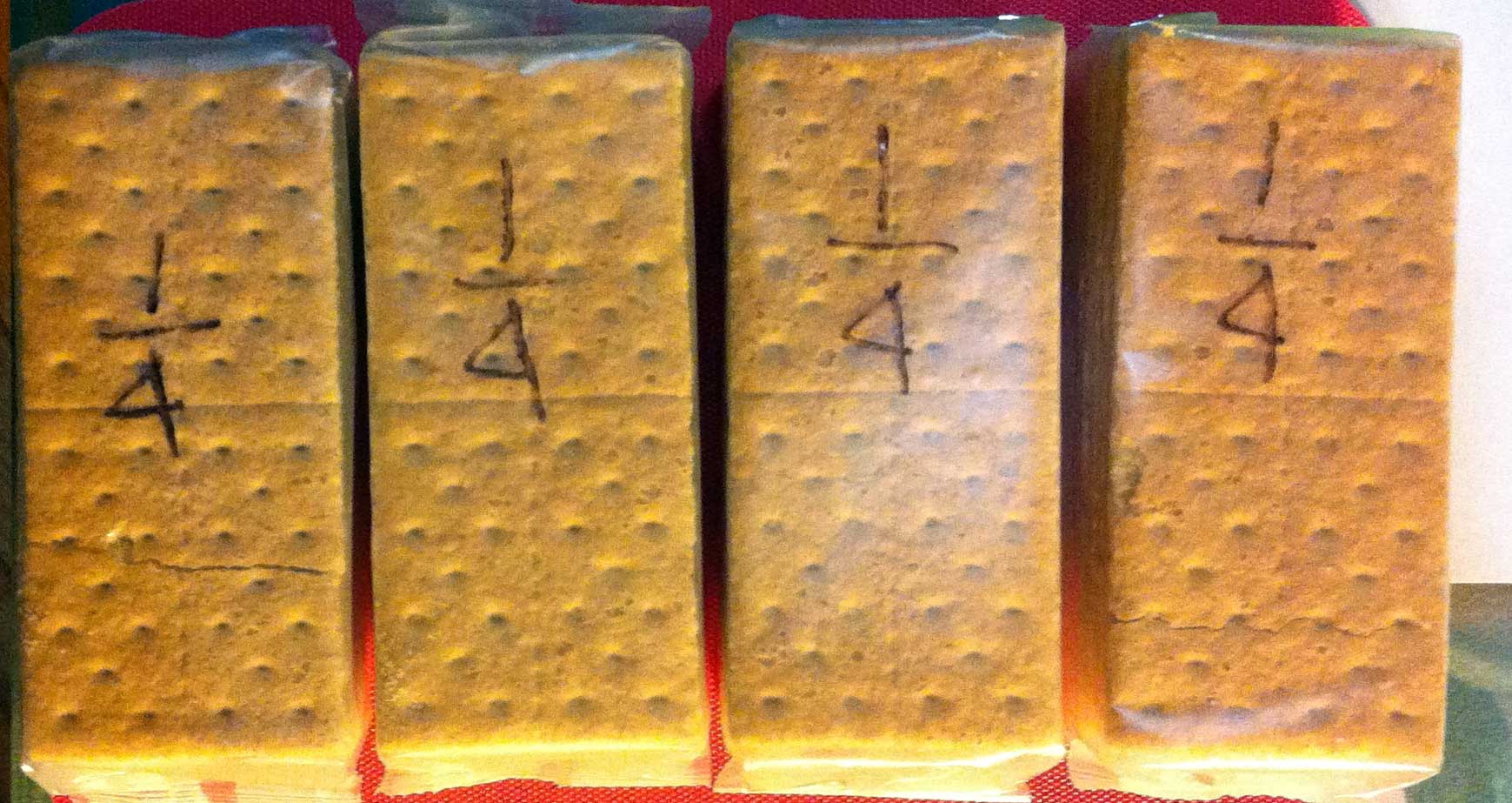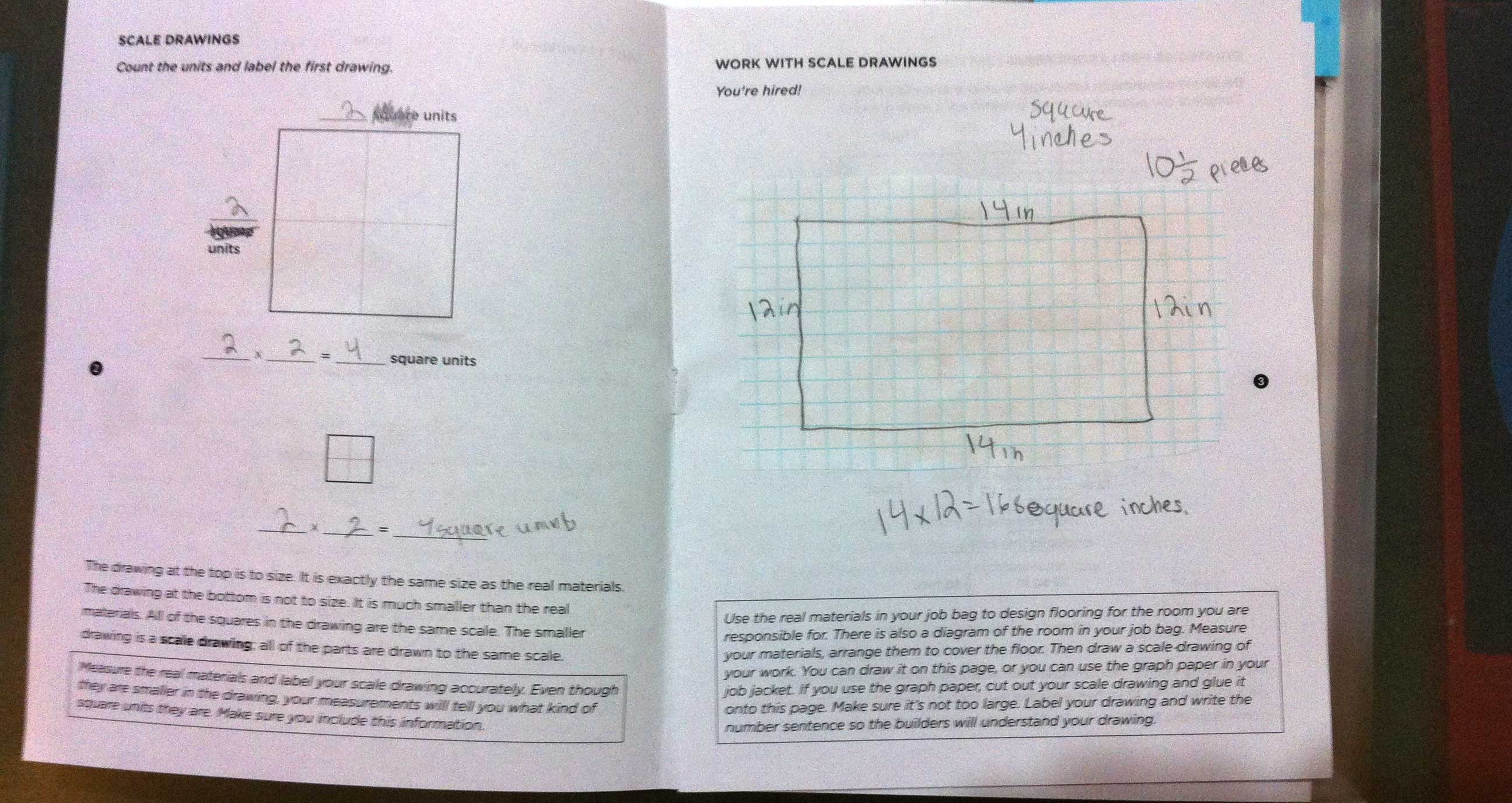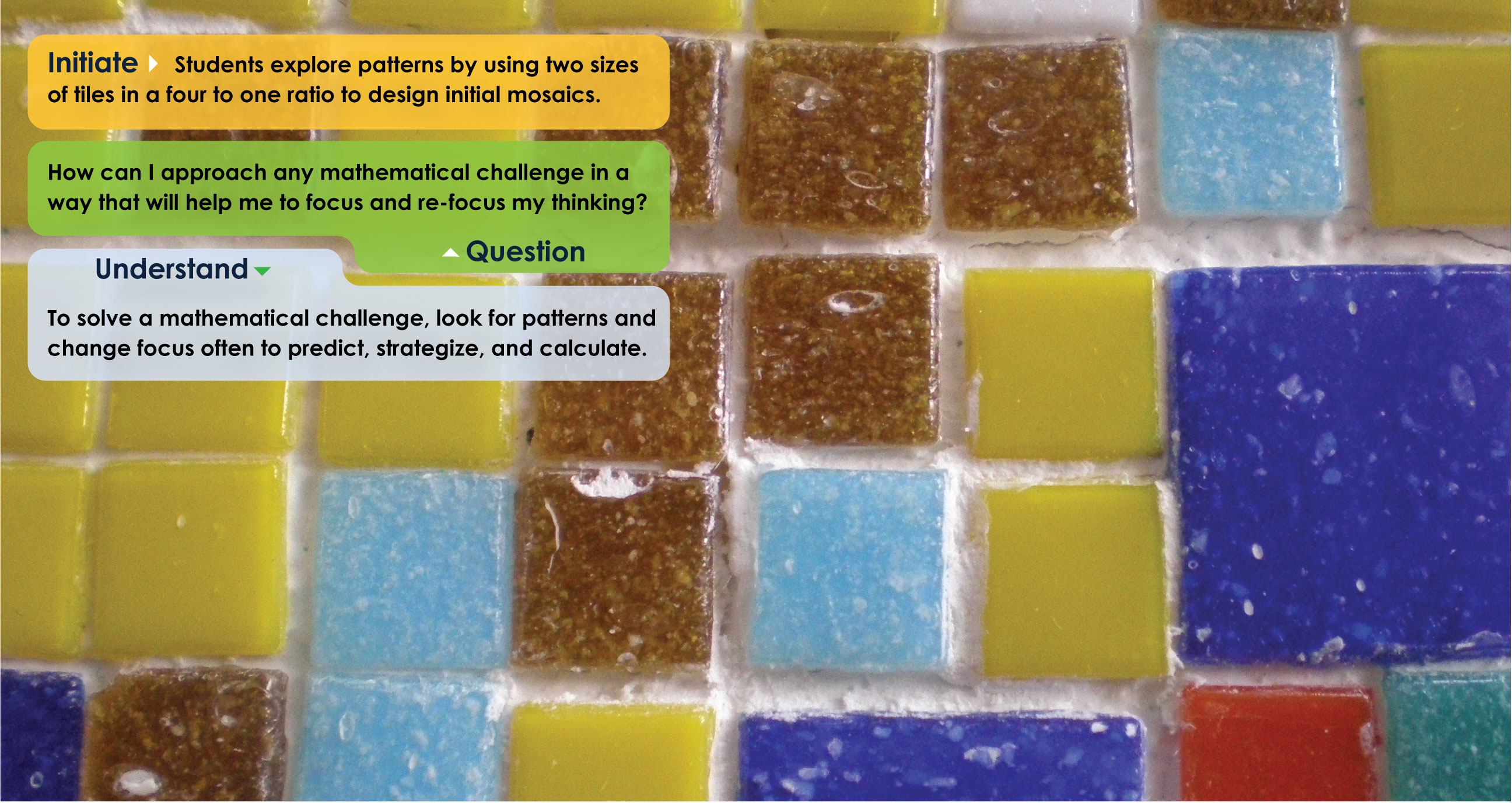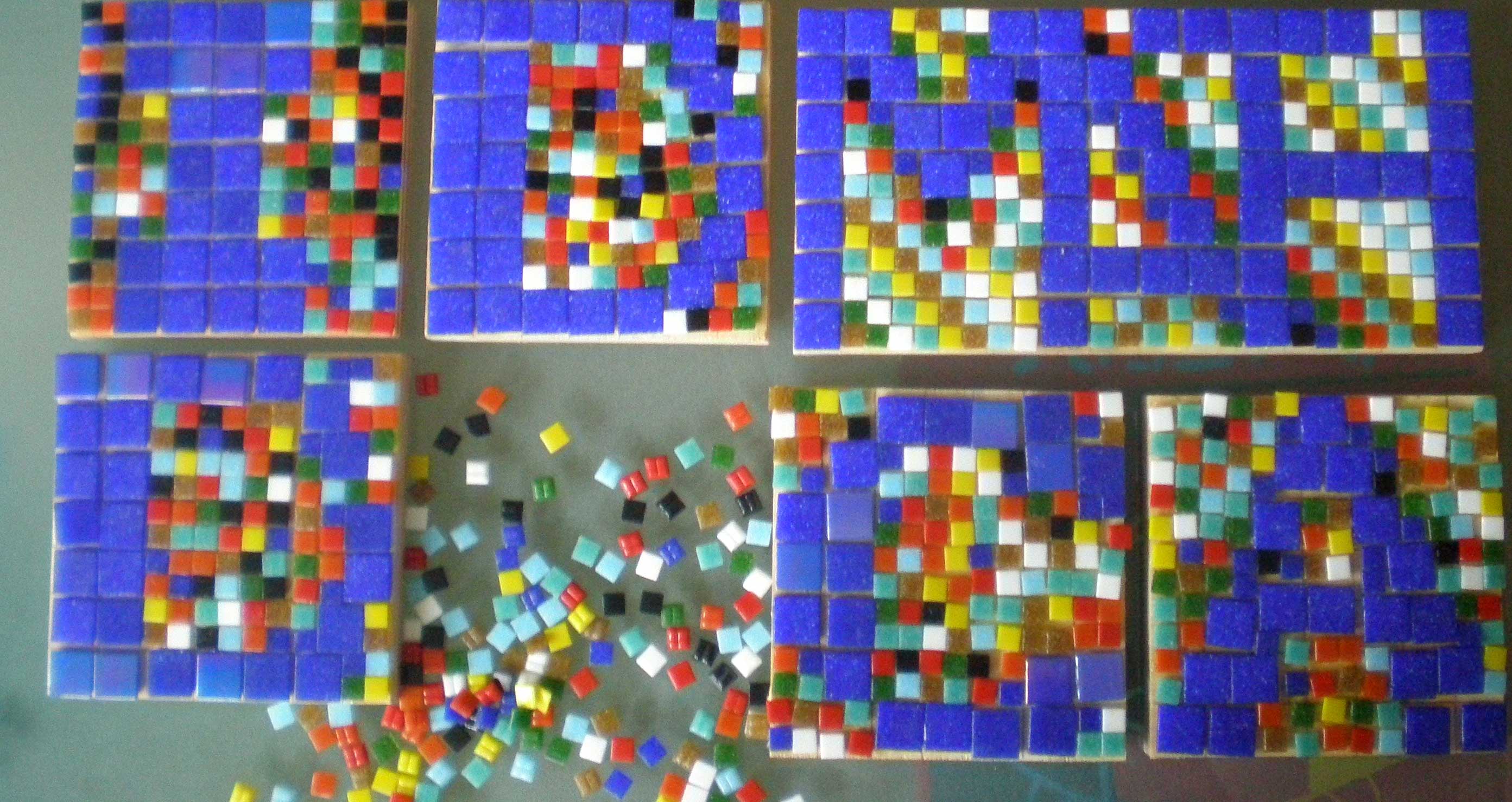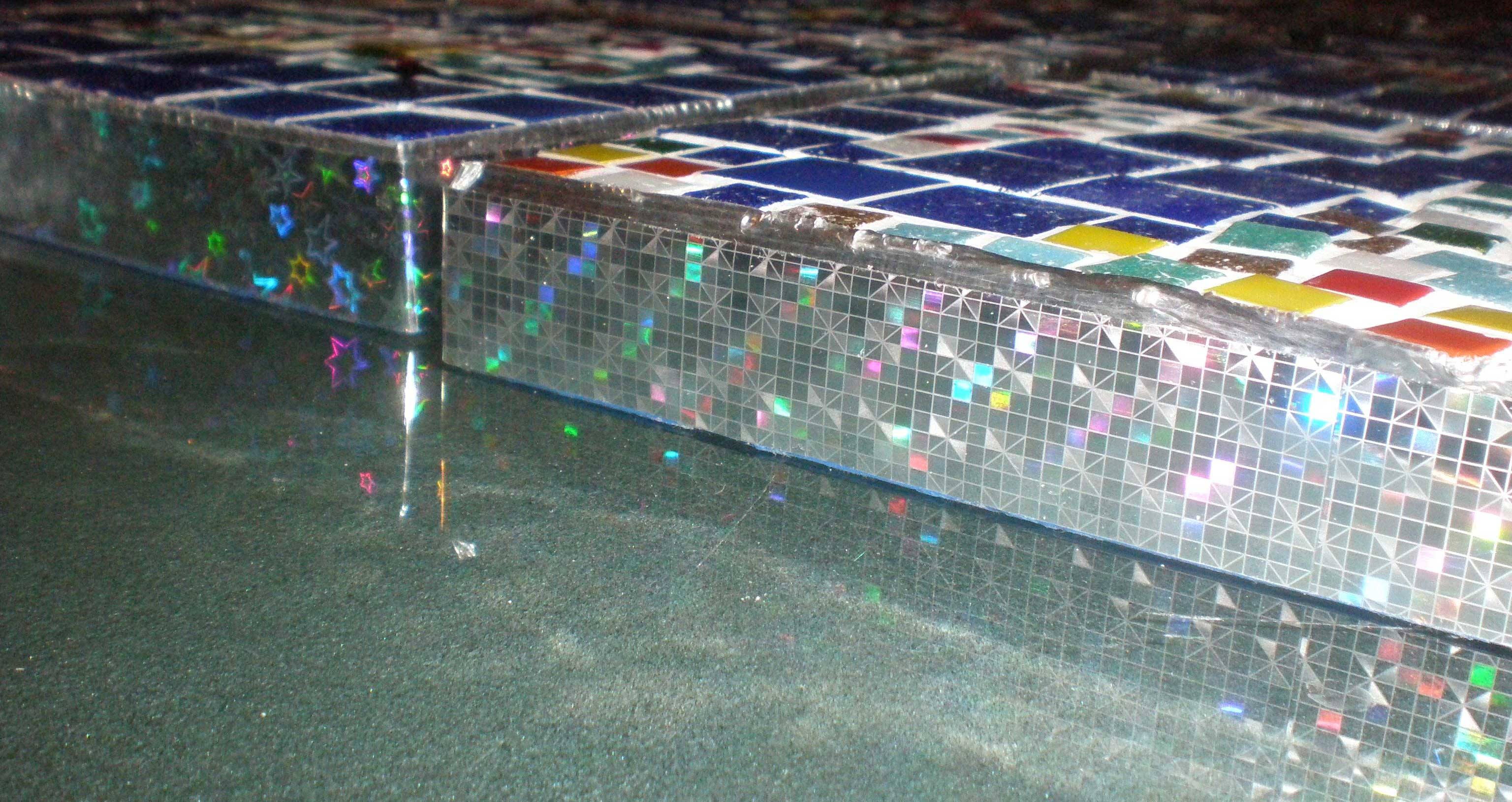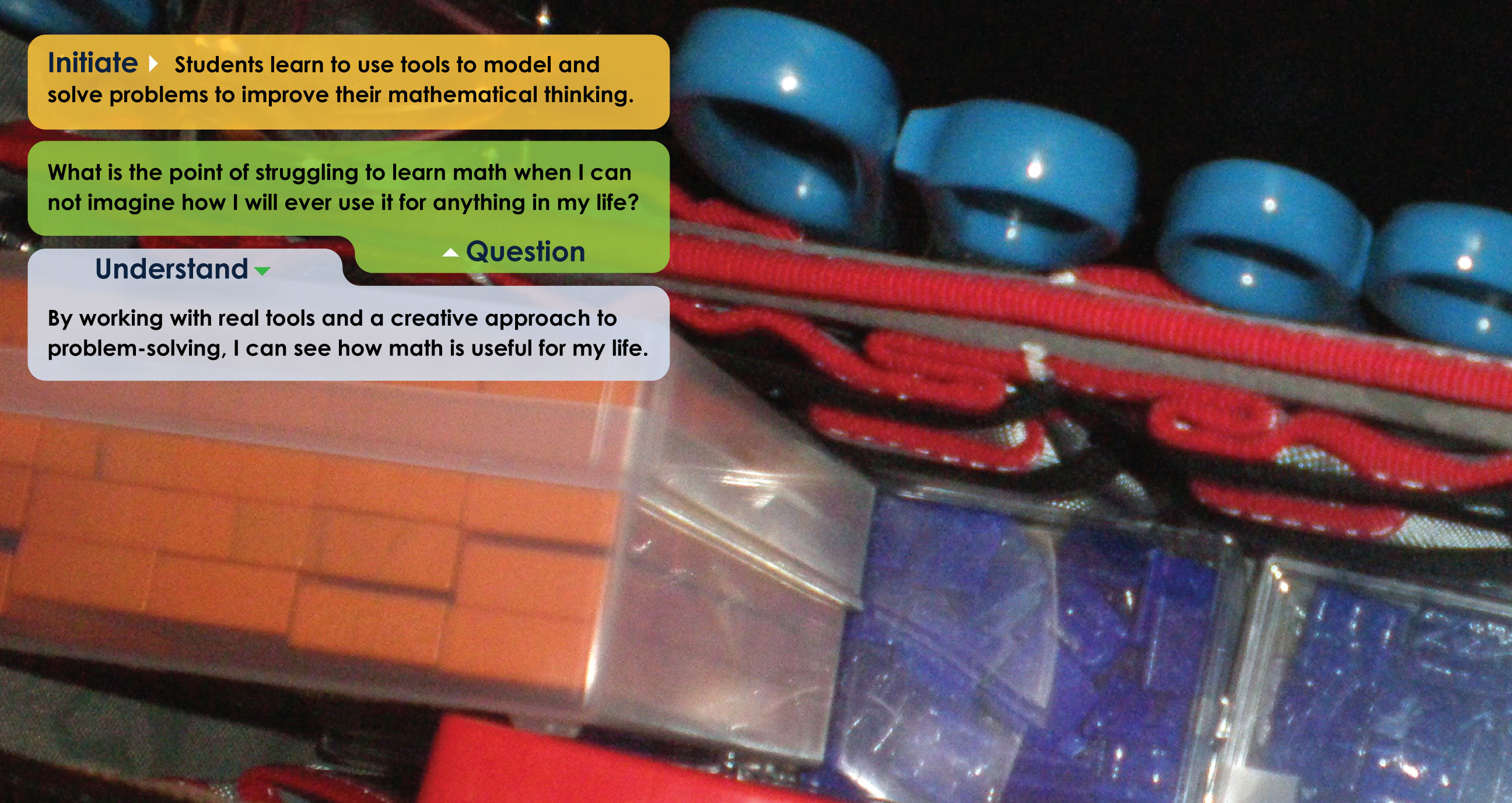Hands-on work with the common fraction
Numbers are abstractions. For young mathematicians, fractions can be some of the most baffling abstractions ever. Even the way we write fractions is baffling: a one with a bar and a four beneath it is read as ‘one fourth’ and ‘one fourth’ is actually a number. What on earth can this baffling set of symbols really represent? Even before children are taught that decimals, ratios, and percentages are also fractions, they need support to understand how the strange configurations we call common fractions work.
Category Archives: Groups
Entrepreneurial Place Value
Banking for a practical number sense
Students in sole proprietorships or partnerships keep the banker busy as they earn base-ten units with each roll of their dice. By placing their groups of ten on the correct columns of their company’s place-value mat, they trade units for longs, and longs for flats as their mats fill with earnings. Student entrepreneurs who maintain orderly transactions should be able to tell the banker what the value of their business is whenever prompted. This gently competitive exercise helps students learn and improve their knowledge and understanding of place value.
Fractions Sushi
Math Tools For Building Confidence
Dignity and support for struggling mathematicians
Students in small group math sometimes need help learning a particular concept. Some are missing understanding of some basic skills and concepts. Some are nervous about math—period. Some are reluctant to admit they need help at all. Each student signs an individual job bag. This bag holds work. This is engaging work designed to help students to overcome their math anxiety. The weekly assignments coincide with and reinforce concepts the general class will learn in the unit. Students don’t fall behind, plus they have the confidence to participate more in the general math class. Basic skills building exercises are created to help students gain the math know-how they’ll need in order to keep up with the general math unit.
Math Mosaics
Patterns and perspective in problem solving
Faced with a block of plywood, a grid, and two sizes of mosaic tiles—one is a quarter the size of the other—students design one of their initials. They struggle to make shapes appear to angle or curve using square patterns of 4 to 1. Up close, their attempts do not appear to be letters at all. Yet, when the perspective is changed a different picture emerges. This is what happens with any mathematical challenge. We have to zoom in to see what the challenge is and to collect important information and details. We might zoom out to see the whole picture, to determine what the goal is, to think, predict, or estimate. Next, we zoom in to see the details, to understand how the challenge works, what it needs; we choose a strategy and carefully try it out. We zoom out again to see if the strategy worked, if the results matched our prediction, if our estimate was even close. We’re not done until we’ve zoomed in once more, this time, to check our work. This exercise helps students learn that beautiful solutions are not all about the right or obvious answer. A creative approach to mathematical challenges often involves a search for patterns and many changes in focus. In this case, students were pleasantly surprised to see that, in most cases, their initial struggles did in fact result in recognizable and beautiful letters.


